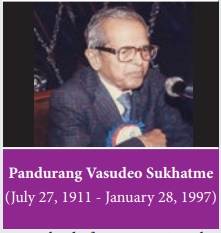Sampling Techniques and Statistical Inference - Introduction | 12th Business Maths and Statistics : Chapter 8 : Sampling Techniques and Statistical Inference
Chapter: 12th Business Maths and Statistics : Chapter 8 : Sampling Techniques and Statistical Inference
Introduction
Sampling
Techniques and Statistical Inference
Introduction
Pandurang Vasudeo
Sukhatme (1911–1997) was an award-winning Indian statistician. He is known for
his pioneering work of applying random sampling methods in agricultural
statistics and in biometry, in the 1940s. He was also influential in the
establishment of the Indian Agricultural Statistics Research Institute. As a
part of his work at the Food and Agriculture Organization in Rome, he developed
statistical models for assessing the dimensions of hunger and future food
supplies for the world. He also developed size and methods for measuring the
nature of the protein gap.
In any statistical
investigation, the interest lies in the assessment of one or more
characteristics relating to the individuals belonging to a group. When all the
individuals present in the study are investigated, it is called complete
enumeration, but in practice, it is very difficult to investigate all the
individuals present in the study. So the technique of sampling is done which
states that a part of the individuals are selected for the study and the
assessment is made from the selected group of individuals. For example
(i) A housewife tastes a
spoonful whatever she cooks to check whether it tastes good or not.
(ii) A few drops of our
blood are tested to check about the presence or absence of a disease.
(iii) A grain merchant
takes out a handful of grains to get an idea about the quality of the whole
consignment.
These are typical
examples where decision making is done on the basis of sample information. So
sampling is the process of choosing a representative sample from a given
population.

Related Topics